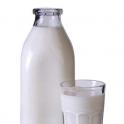One protein source that often gets passed up for chicken, fish, or beef is ham. While ham isn’t quite as lean as chicken or fish may be, it’s still a good source of protein that you should consider adding to your diet when you need a break from the usual.
When chosen carefully you can get very lean varieties of ham that will surely fit the bill when it comes to your fat loss diet plan.
Let’s look more carefully at what nutritional benefits ham has to offer.
Major Nutrients Found In Ham
Ham is going to offer a good dose of protein content for anyone looking to get more of this nutrient but the one thing that you do need to be aware of is the fact that it also tends to be higher in salt as well. If you’re on a reduced sodium diet, you’re going to have to select your ham very carefully or you could likely end up taking in more salt that you had wanted.
Ham is also a good source of vitamin C, Thiamine, Protein, Niacin, Vitamin B12, Phosphorus, as well as Selenium.
Storing/Selecting
When selecting ham you’re going to want to make sure you select the leanest variety possible. Very often it will state on the package how lean the meat is so look there for your clue as to what percentage of total calories come from fat.
It’s best if you can purchase your ham in a vacuum sealed package that shows a recent packing date.
When you get home, place the ham immediately in the fridge for storage or place in the freezer if you don’t plan to use it within a few day’s time.
Eat It With:
Ham is often eaten with scalloped potatoes however for better health promotion, choose to have it with a baked sweet potato instead. Ham also works as a breakfast protein source when eaten with eggs or egg whites, so that’s another way you can prepare this meat.
Burn Off Calories In Ham
To burn off the number of calories in a serving of ham you would have to do:
- 30 minutes of motor cross sports
- 32 minutes of gardening
- 40 minutes of brisk walking




